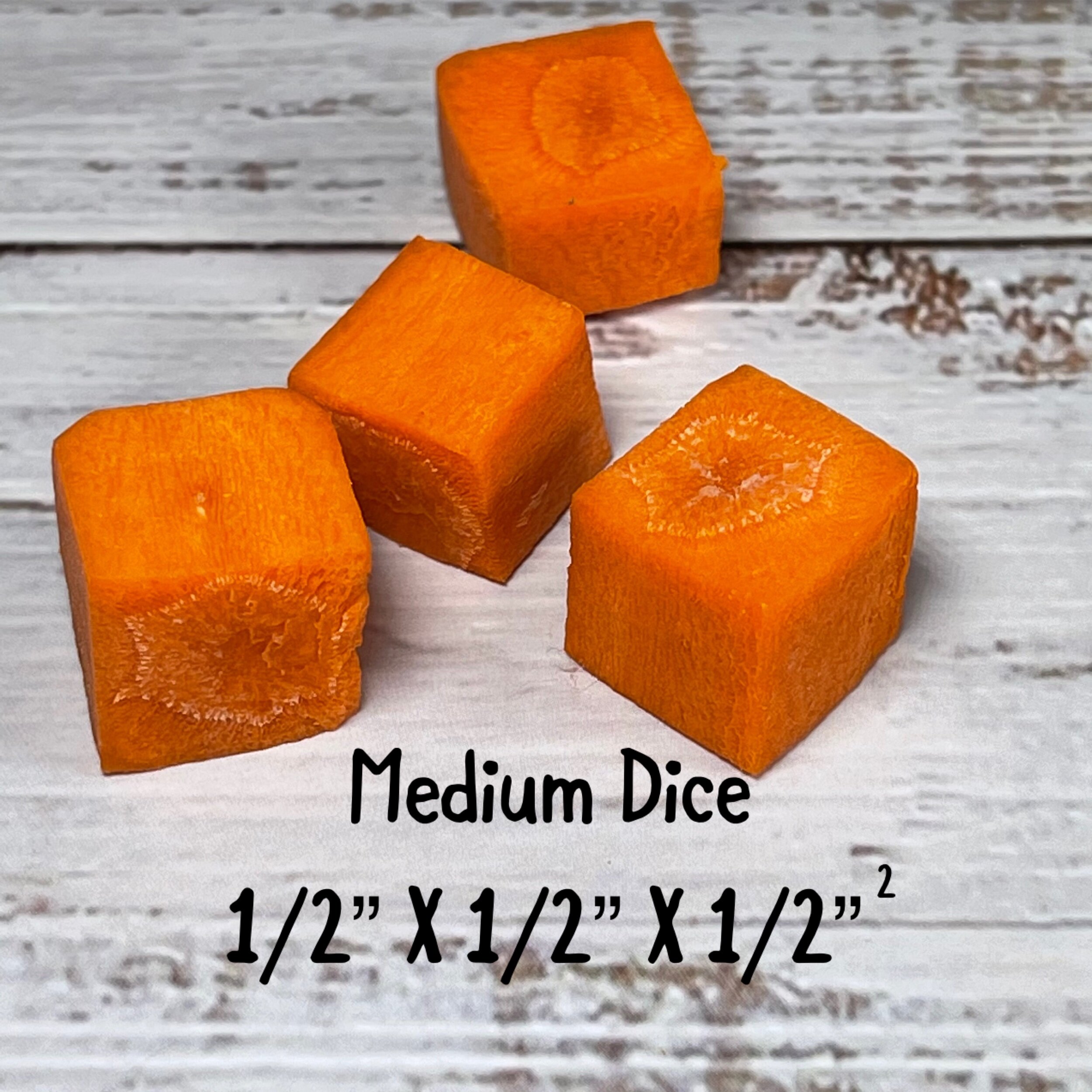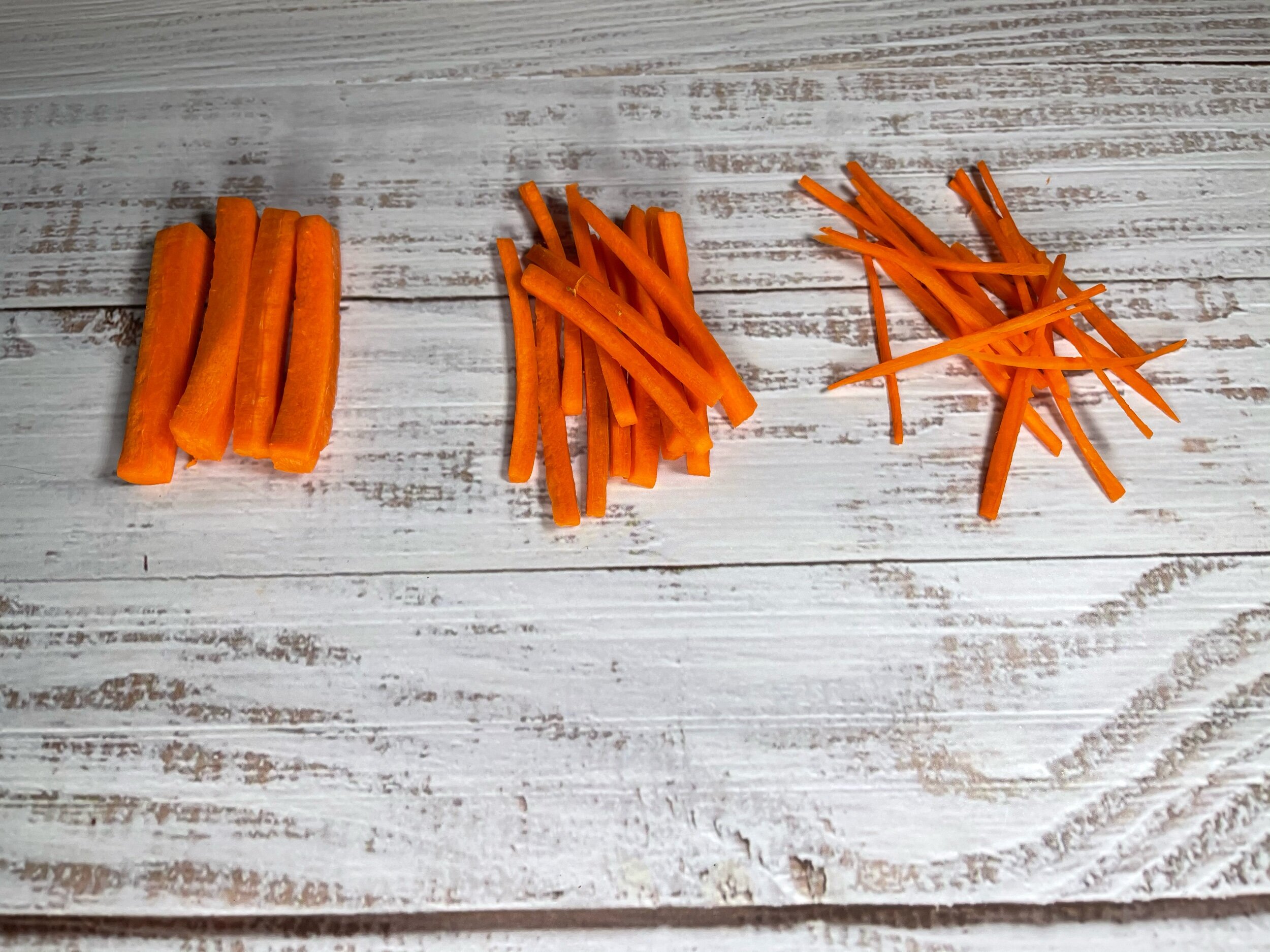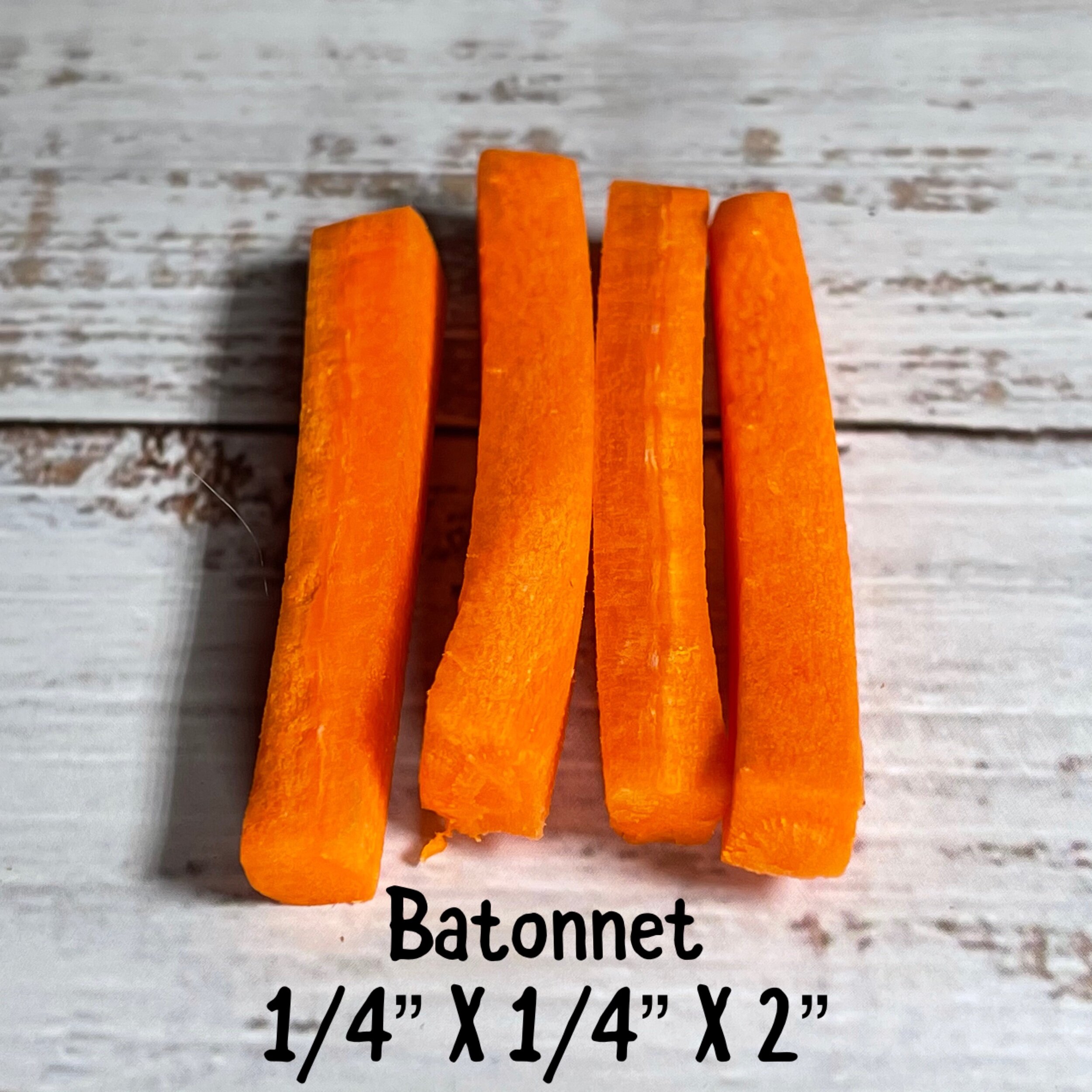Knife Cuts
In recipes, there are various knife cuts mentioned which can be a bit confusing as many times the terms are a mixture of french or common terms. Why we use the word “julienne” instead of “matchstick’ often enough but then use “dice” instead of the corresponding French term according to the size of the dice, is beyond me. But knowing both terms can make reading a recipe a bit easier to understand.
Progression of common knife cuts.
Note: photos can make food appear larger than they are in reality.
Cube Cuts
A cube or dice cut is simply cutting food into uniform blocks that are under 1 inch and equal on all 6 sides. It can be done for aesthetics but more importantly, it is so the food, typically vegetables, cooks at the same rate. The size of the dice affects the texture and the flavor of the dish they are a part of.
Large Dice or Carré
Large dice or Carré cut measures 3/4” X 3/4” (20mm). A large dice is when you need chunks of a fruit or vegetable in a uniform size. They can be used for soups and stews that required lengthy cooking times so they don’t break down to mush. Large diced vegetables can also be a good size to accompany a roast. The procedure is the same as the other dices in starting with a plank, in this case measuring 3/4'“, stacking them, cutting 3/4” sticks from it, and then turning 1/4 turn and cutting off 3/4” cubes.
Medium Dice or Parmentier?
A medium dice or Parmentier cut measures 1/2” X 1/2” (13mm). To start, make Batons measuring 1/2 of an inch and then turn and cut off 1/2” cubes from the strips. A medium dice are good for heartier soups and stews as well as chopped salads.
Small Dice or Macédoine
Small dice or Macédoine cut measures 1/4” X 1/4” (5mm). You start by making Batonnets, turning 1/4 turn, and cutting 1/4” cubes from it. Small dices are perfect for soups or for vegetables in fillings.
Brunoise
A Brunoise cut measures 1/8th X 1/8th” (3mm) cubes. It is the cut used many times for sauces, garnishes, or in preparations where a tiny cut of vegetables are needed. The starting point for the Brunoise is the Julienne cut. Simply turn the julienned vegetables a 1/4 turn and cut 1/8th” cubes from it.
Mince
A mince cut measures 1/16th of an inch. Even the most inexperienced cooks many times know the term “mince” and just go wild chopping garlic into teeny pieces, but there is actually a procedure for those inclined. Its starting point is the fine julienne cut which then is given a 1/4 turn and 1/16th” bits.
Strip Cuts
Strip cuts are the basis for cube cuts. They can be used on their own in a recipe or by turning the strip perpendicular and cutting off the cubes for the various dice cuts.
Matchstick or Julienne
Julienne cuts are also called “alumette” (which means matchstick in French) and are tiny strips measuring 1/8” X 1/8” X 2-3 inches. To make them, cut the vegetable into 2-3 inch sections. Then cut each section into 1/8” planks, stack the planks, and cut 1/8” strips. The Julienne is also the starting point for the brunoise cut and is also good for nice presentations on salads, in stir-fries, and much more.
Fine Julienne
The Fine Julienne is simply half the size of the Julienne cut. They are tiny strips that measure 1/16” X 1/16” X 2-3” long. They are used mostly for garnishes using very firm vegetables. It is also the starting point for mincing as well.
Batons
A Baton is the largest of the stick cuts and is the precursor to the medium dice. It measures 1/2” X 1/2” X 2-3” long. It isn’t as common of a cut as the smaller batonnet, but it is made by cutting 1/2” planks measuring 2-3” long and then cutting those planks into 1/2” strips. Some types of steak fries can be an example of a Baton cut.
Batonnet
Batonnet means “little stick”. It is the cut used most often for carrot sticks for a crudites platter. A “true batonnet” measures 1/4” by 1/4” and 2-3 inches long. You cut the vegetable into 1/4’ planks and then turn and cut into 1/4“ strips. The batonnet is the starting point for the small dice.
Chiffonade
Chiffonade is used for things like herbs or leafy vegetables. You start by stacking the leaves and then you roll them up as one unit. Finally, turn the roll 1/4 of a turn and slice perpendicular strips. The size can be controlled according to which way you roll the leaves and how wide you cut your strips. Smaller cuts are used for herb garnishes or where you want a large piece of the herb instead of it chopped up and larger Chiffonades are typically used for leafy greens.










